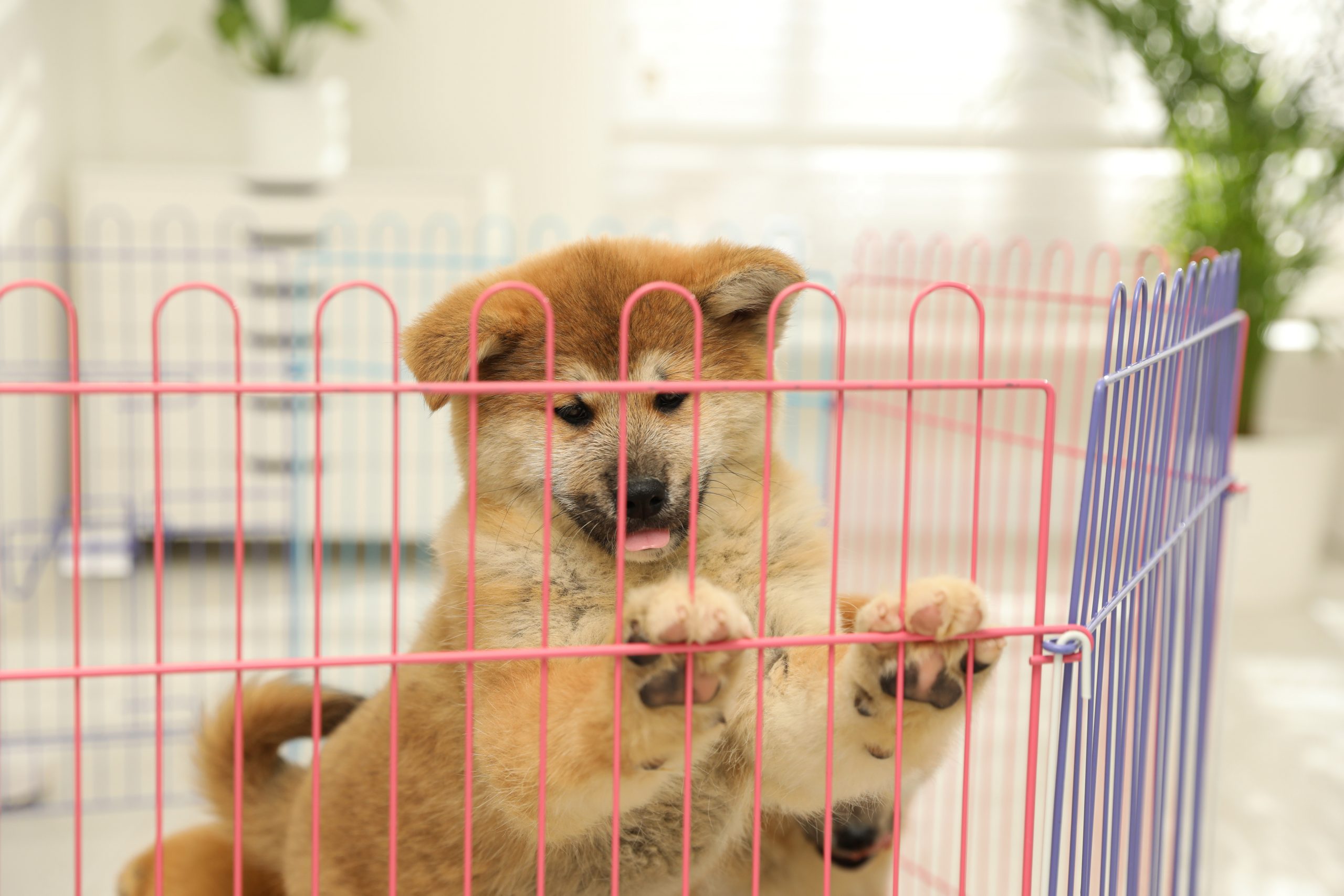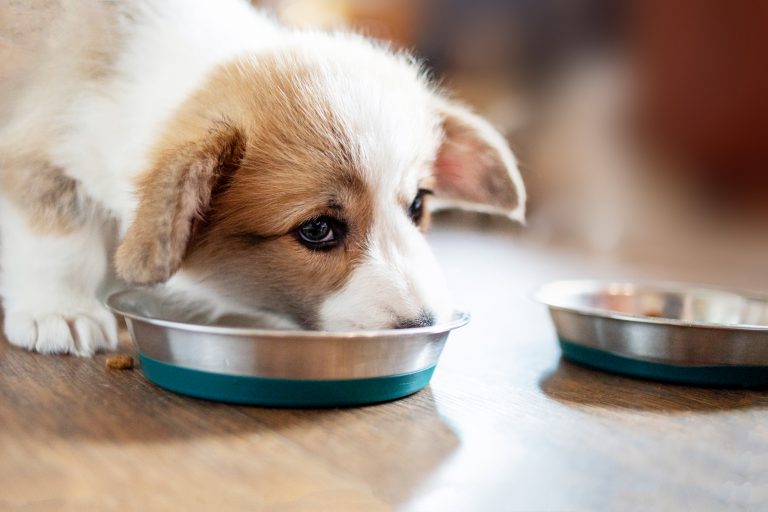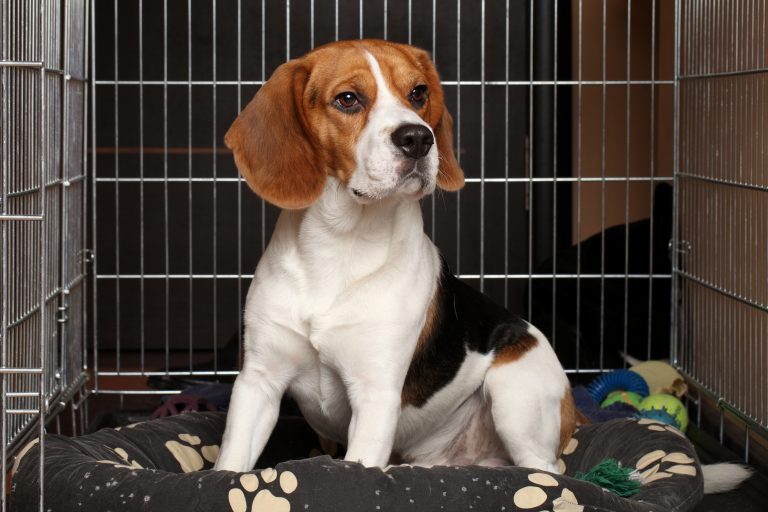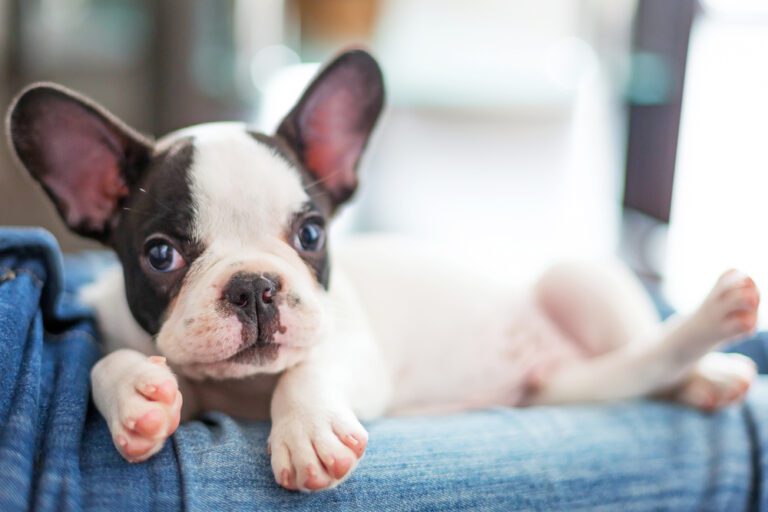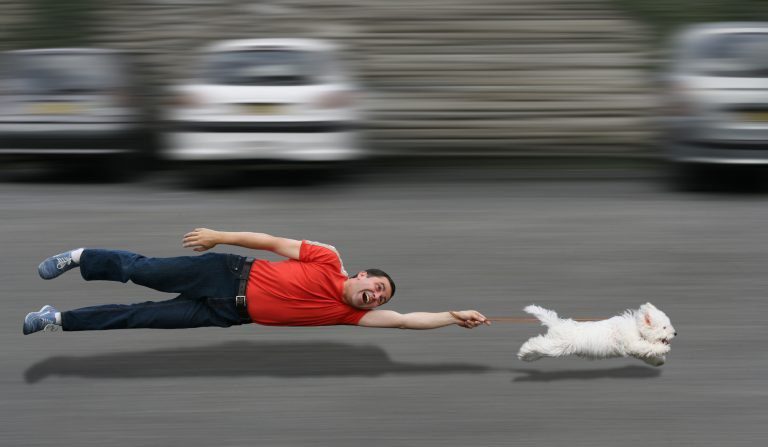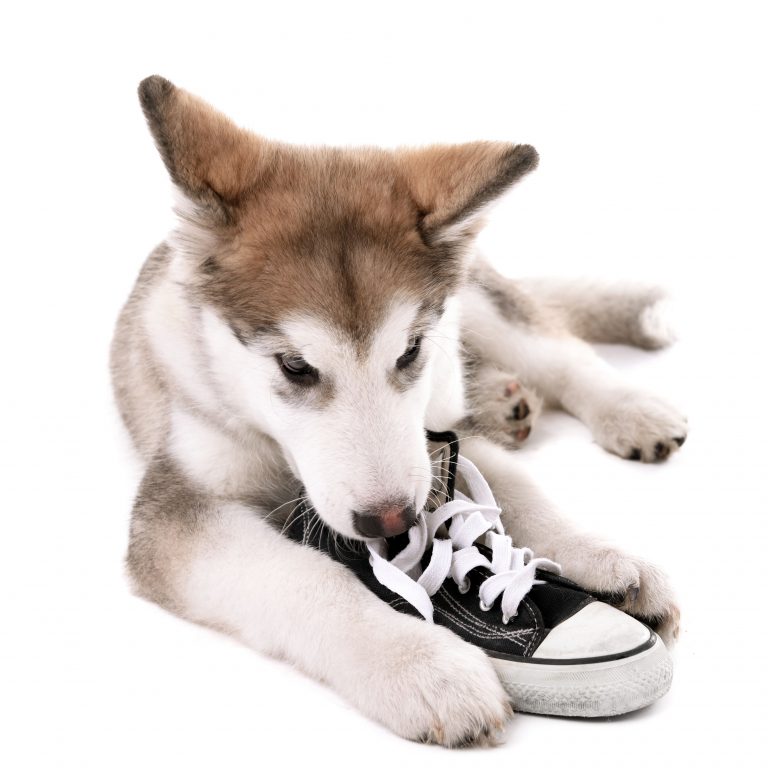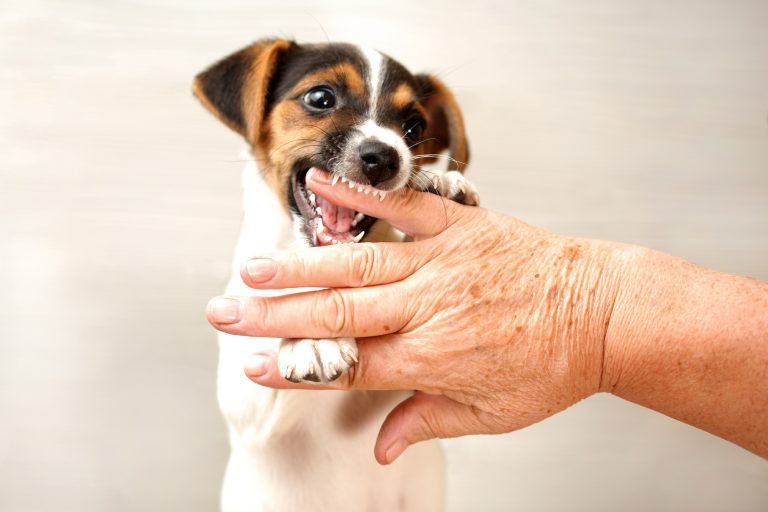Leaving Puppy in Playpen While At Work – Is This Harmful?
Managing a busy schedule while having a dog is a huge responsibility for anyone. If only we could bring Fido to work every single day, why not, right? But if that is not a possible, is leaving puppy in playpen while at work a suitable alternative?
I know given the choice, most dog parents would love to bring their furbaby to work with them. Unfortunately, you can’t do anything you like at work. But you can do something about your dog’s house situation. But is keeping your pup inside a playpen completely safe? Is it affordable? Sustainable? What kind of playpen should you look for?
We’re sure you have these questions in mind and more. Good for you, we’re here to answer them! In today’s article, let’s discuss all matters concerning leaving puppy in a playpen while at work.
How Safe is it to Leave my Dog Alone at Home?
Regular potty breaks – or the lack of – must be the most important concern of owners when leaving dogs in their homes alone. Worst case scenario, dogs can hold in their pee for 10 to 12 hours as necessary, but it doesn’t mean you should abuse this.
Between 8 to 12 weeks, your pup’s bladder capacity is still developing. This means they don’t have proper bladder control yet and would require more frequent potty breaks. By 3 to 6 months, they would have developed better control over their bladder. At this point, they can hold in their pee between 3 to 6 hours on an estimate.
At 12 months, your pup starts to enter their adult dog years. By this time, they have total control of their bladder and can be left for long hours without being bothered about it. Around the same time, they would already have built a routine on when to eat and drink at their own will. You can leave a bowl of food and water and expect them to be completely consumed by the time you get home!
To cap it off, you may leave your 10-week-old pup for an hour at maximum and dogs beyond 6 months between 6 and 8 hours at most. Until you’re back, they can most likely keep themselves entertained with the right toys, and eat and drink voluntarily.
Playpen Versus Dog Crates
A dog playpen, also known as an “exercise pen”, is an enclosed ring involving six to eight panels. It can be made of nylon, steel, or plastic. They can be with or without floorings, and with or without top covers. The entirety of its size varies per playpen and typically caters to small to medium dogs. It can be used indoors and outdoors.
If you’re not aware yet, there are a couple of logical reasons why you should put your pup in a playpen, such as extreme playfulness, separating them from guests or small children, or working on behavioral training.
In the essence of confining your pup, why is a playpen better than a dog crate? For starters, an exercise pen provides more space for mobility and functionality. In turn, it enriches your dog’s curiosity and learning even while you’re away.
Also, it leaves more room to place toys, water bowls, and food bowls. This ensures that your pup eats properly even without supervision. Overall, it makes the idea of leaving puppy in a playpen while at work completely safe and practical.
Solitary confinement in a playpen may not be the most exciting thing in the world for your pet, but it’s definitely better advised than leaving your pet in a crate for the whole afternoon where there’s a high tendency to feel cramped.
There’s also no room to go “potty”, and leaving dog bowls is almost impossible, given the limited space. It goes without saying that your pup won’t be able to play properly inside a small crate, let alone stretch out every once in a while. Case in point: stop “crating” your pups unless it’s for a short period of time or if you’re training your pup to sleep on its own.
Pros of Playpens
Here are some of the advantages of leaving your furbaby in a playpen while you’re at work.
Safe Enclosure
One of the best features of having a playpen in your home is giving your pet a safe enclosure while ensuring their mobility. An exercise pen has no weird corners or assembly parts that can possibly harm your dog while left unsupervised.
This is especially true for puppies or a newly adopted doggy. Dogs are curious animals in general so when left on their own to roam the house, there’s no knowing what dangers they will get themselves into, such as chewing on electrical cords.
Generous Space
Compared with a crate, space is another great advantage of choosing a playpen for your pup. They can freely roam around, stretch, walk, play, and sleep comfortably in the limited space provided to them without leaving them feeling suffocated. This gives you peace of mind that you’re not compromising the health and comfort of your puppy, especially when they still have developing muscles, bones, and joints.
Easy Assembly
Lastly, you’d be glad of the easy assembly a playpen brings your way. There are usually no complicated steps to follow. Simply unfold, stack up, and you’re good to go! Playpens are typically lightweight, even when they’re made of steel. This makes your job quick and seamless.
Cons of Playpens
With pros, there will definitely be cons. Below are some disadvantages of leaving your pup in a playpen which you may want to take into considerations before you decide if playpens are a good choice.
Confinement for Hours
A dog’s day goes by faster than a human’s, so leaving them in a playpen would feel like an eternity. Of course, it’s not entirely suffering for them, but leaving your pup inside a playpen for an entire day is still less forgiving than letting them roam all over your house until your return.
On the other hand, you can make up for this by ensuring that you spend a few hours of quality with them. Ensure that you play with them, take them on long walks and give them lots of love when you’re home.
Delayed Potty Breaks
Being in a playpen for hours means not following your dog’s everyday routine. Until you get back, potty breaks are delayed unless they are trained to pee and poop indoors. Of course, you may also train them to take potty breaks inside the pen.
However, that means you have to put cleaning up as the first task on your list once you arrive home. You also need to ensure that you clearly differentiate your pup’s rest, food and potty area in the playpen.
Too Big for Large Breeds
Exercise pens are designed to safeguard smaller dogs, so they wouldn’t work for larger breeds. Even if they fit inside, it will be easy for them to jump over the fence and be free. It’s not any easier if you have well-trained dogs that also happen to be great escape artists!
Playpen Shopping Checklist
You’ve probably heard about playpens, but have no first-hand experience buying one. So let us guide you through the process of which playpen to purchase.
Take a look at this list we curated for you to ensure you have considered everything you need to before making a final purchase. There are many factors to consider but we feel that these are 8 most essential ones that’ll help you.
1. Size of the Dog
As mentioned earlier, not all dogs can be enclosed inside a playpen. These breeds include Great Dane, German Shepherd, Golden Retriever, Alaskan Malamute, and the like. Since these breeds are highly trainable, you might as well train and trust them to be well-behaved once they have the house to themselves.
On the other hand, if what you have is a puppy, pups of any breed can be considered for a playpen since they haven’t fully grown yet.
2. Dog’s Behavior
Another major aspect you should consider before purchasing a playpen is the intensity of playfulness or aggression of your dog. Either behavior can wreak havoc on the playpen and leave your belongings sabotaged. Gauge your dog’s behavior and let them ease into the routine of being placed in the playpen, so they can gradually adjust and be well-conditioned once it’s time for you to head to work.
3. Dog’s Needs
Spending some hours in the playpen means not being able to follow your dog’s daily routine, including feeding time, potty time, exercise time, and rest. Depending on their daily food and water intake, as well as exercise needs and pastimes, you should leave your pup sufficient food, water, and exercise toys for their entertainment and some physical activity.
Potty training will take some time but as long as you’re dedicated to training your pup to perfection, it can definitely be achieved. Be prepared to exercise lots of patience.
4. Location
Finding the best spot in your home to assemble the playpen requires critical thinking. You will be leaving your dog inside the house alone for hours, so they should be comfortable then. A common area is the living room. It’s an open space with a good view of all access ways on the ground floor of your home. Kitchens usually have spacious flooring as well. You can effectively assemble even the biggest exercise pen without disturbing the order of your furniture.
5. Material
Dog playpens are made with either nylon, plastic, or steel. The best way to find the right material for the playpen is to look into your dog’s behavior. Playpens have a default look and the material won’t matter much unless your pup has a tendency to be reckless and destructive even from a young age. The material will also dictate how you’ll clean the playpen (if applicable) and the best type of storage system when not in use.
6. Assembly
All playpens are fairly easy to assemble. It doesn’t involve intricate steps or small assembly parts that are choking hazards. You may inquire how the playpen is to be assembled before you purchase it so you can be ready to put it up once it arrives.
7. Adjustability
Some dog playpens are adjustable and can be modified according to your desired shape or structure. This is advantageous if you have a tiny space that requires plenty of modification. If so, make sure you factor this in when window shopping for an exercise pen for your pup so you can simply adjust the playpen instead of adjusting all your furniture to accommodate the pen.
8. Portability
As odd as it may seem, a playpen might even come useful on your next trip out of the town. Playpens have a foldable structure by default, which means they’re space-saving to bring to trips. Your deciding factor in bringing or leaving it boils down to its length and if it fits your vehicle.
Do’s and Don’ts of Leaving your Dog in a Playpen
At this point, we’ll assume that you have made up your mind, and buying a playpen is the best move for when you have to leave your dog at home. Here are some reminders to get you properly geared for this phase of your pup’s life.
✅ Do Leave Food and Water
According to Pets WebMD, dogs require an ounce of water per pound of body weight. If you have a 10-pound pup, you should leave 10 ounces or roughly 295 ml of water for the whole afternoon. Small dogs can still fit in playpens. If they’re on the heavier side, estimating 25 lbs, then they would need 25 fluid ounces or about 740 ml of water per day.
Food is subjective for every pup. Of course, it’s a bit tricky to leave wet food behind, so it’s best to go with kibbles. At 8 weeks, puppies will have grown their teeth and can therefore eat solids without having to be diluted in water. On the chance that your pup is on a special diet, ask a trusted individual to drop by during lunchtime to prepare their food.
You may also consider getting an automatic food dispenser where you or your pup can release food on command. It definitely requires some getting used to, but your pup would surely catch up to the dispenser’s mechanics especially if it involves their favorite food!
✅ Do Give Toys for Amusement
Pups are naturally full of energy at this phase of their life. Fortunately, they can get by with any toy you give them. Unfortunately, they don’t know what’s safe or harmful for them. Make sure the toy is sturdy and is made with non-breakable material so there’s no risk of swallowing choking hazards. You may give them teething toys, rope chew toys, and key ring bones as safe options.
Puppies teeth from 3 to 12 weeks, which is a good time to pamper them with teething toys while you’re busy at work. Meanwhile, avoid harmful toys for puppies such as stuffed toys, squeaky toys, toys with bells inside, latex toys, painted dog toys, tennis balls, and other forms of ball toys, rawhide, and animal parts like pig ears and cow hooves at all costs.
✅ Do Prepare Peeing Pads on the Floors
It’s inevitable for pups to pee inside the playpen especially since they’re still developing their bladder control. Training them to pee on pee pads will help a lot once it’s time to leave them alone at home.
On the same note, choose floor portions that are easy to clean. Even with the pee pads laid out, it’s best not to push your luck with urine stain and smell. Avoid floors where pee or poop will be difficult to remove such as carpets, solid hardwood floors, and laminated flooring. Any waterproof flooring goes best with playpen confinements for your pup. Tiles and stone floorings are good options.
✅ Do Provide Obedience Training
You’ll find tremendous success in keeping your pup safe and sound inside the pen if you use obedience training as the foundation of this routine. This includes socialization training, strict potty training for pups before they’re allowed to roam freely inside your house, and practicing essential commands for their familiarization.
✅ Do Consider Installing Indoor CCTV
You could feel guilty leaving your weeks-old pup at home. This is completely normal. A good solution for this is installing an indoor CCTV where you can watch your pup’s activities through your phone. It’s not a cheap solution, but it works long-term. If you have the budget for it, choose a camera that provides crisp details, audible sounds, and zoom-in capabilities.
🚫 Don’t Be Gone for Too Long
Even adult dogs shouldn’t be left alone for an extended period, let alone pups that are just getting to know the world. Maintain a precise schedule where you can be at home in time for dinner and still have time to bond with your pup and clean up.
If work requires you to stay overtime, have a list of trusted individuals you can contact on a whim to check on your pup. Afternoon visits are also essential to ensure your pup’s physical wellness.
🚫 Don’t Leave “Foe” Pups in the Same Playpen
Puppies may be naturally playful at weeks old, but it’s never too early to show signs of aggression. Some pups don’t sit well with each other – this could turn rough fights into real brawls – so it’s best to place them in separate pens to prevent them from causing a ruckus while you’re away.
🚫 Don’t Leave Loose Items Inside the Playpen
The only items that should be in your puppy’s playpen are what your pup needs – water, food, toys, and pee pads. Everything else is considered clutter and unnecessary.
Puppies may exhibit destructive chewing whether you’re present or not. The main difference is that you can do something about it when you’re at home. There are common causes behind destructive chewing such as separation anxiety, hunger, and teething. Leaving loose items inside the playpen may encourage destructive chewing.
Aside from this, puppies can be chaotic when the zoomies hit. This is a type of Frenetic Random Activity Period (FRAP) that causes pups or grown dogs to exhibit short bursts of energy through rapid running. They could hit small pieces of furniture or items inside the pen and hurt themselves.
MidWest Foldable Metal Dog Exercise Playpen
Our first recommended playpen for dogs is no other than an Amazon’s Choice product. The MidWest Foldable Metal Dog Exercise Playpen is truly versatile in its form, with ranging sizes that cover 24 inches in width by 24 inches to 48 inches in height. It also offers different closing structures: No Door and With Door in Black, Blue, Gold Zinc, and Pink color choices.

Each exercise pen provides an isolated enclosure area of 16 sq. ft or 1.5 meters. It is suitable for both indoor and outdoor use, featuring 8 ground anchors and 4 thumb-snaps. You have no worries with rust and other outdoor elements, thanks to the durable e-coat finish of this exercise pen.
Overall, the MidWest Foldable Metal Dog Exercise Playpen is easy to assemble, easy to store, and transport-friendly. Finally, it allows attachment to dog crates for added familiarity to your dog.
AmazonBasics Foldable Metal Dog and Pet Exercise Playpen
Another Amazon’s Choice awardee that makes it to our product recommendation is the AmazonBasics Foldable Metal Dog and Pet Exercise Playpen.
This simple-looking playpen is packed with handy features: side-bolt latches, step-through door access, easy assembly (no tools required), and crate connection. 8 ground anchors are also included in the package in case you want to assemble the pen outdoors.

You can choose between the “With Door” and “Without Door” design structures. The sizes pan out from Extra Small (24”) to Large (48”), which gives your pup more than enough space to get cozy in. Having this playpen definitely makes the idea of leaving puppy in playpen while at work smooth and stress-free.
From its aesthetics, you can quickly distinguish this IRIS USA Dog Playpen from other exercise pens. First off, it’s made with molded plastic that can be trusted to withstand various elements and weather conditions. Its skid-free rubber foot protects your flooring and makes moving this playpen seamless as need be.
Beyond pups and small breeds, the IRIS USA Dog Playpen is designed for medium to large breeds without compromising the order of your home. Available in 4 panels (24” H), 6 panels (24” H), and 8 panels (34” H), you can choose between the Black and White colors to match your home interiors. The panels are designed to snap in place to secure your pet inside. There are also built-in locks that make escaping nearly impossible while making it easy for you to open it.
Make your exercise pen of choice practical, durable, and fashionable with the IRIS USA Dog Playpen. Convert it to a dog play yard, gate, fence, and others as you please!

Final Thoughts
Leaving puppy in playpen while at work requires careful planning. You need to consider your pup’s daily needs while ensuring the order of your home. Having a checklist of Fido’s essentials will help you land on the best exercise pen. Keeping a note of the do’s and don’ts will be particularly useful as well.
With all the information and advice provided in this blog post, we hope you can have an easier time finding the perfect playpen that serves your pup’s comfort and needs while giving you a worry-free time at work.

